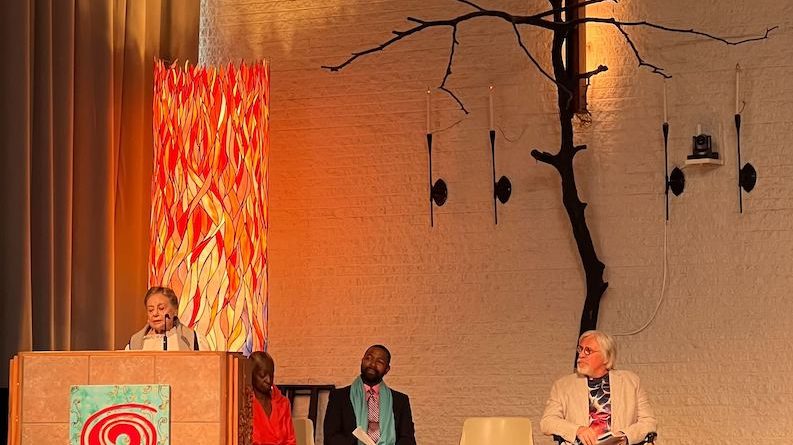Washington church marks 176th anniversary of greatest attempted slave escape
By HAILEY CLOSSON
“Resistance is a mandate then and now…you and I have a ton of work to do,” Hamilton told the eager Sunday crowd.
Seventy-seven enslaved men, women, and children made the abortive attempt on April 15, 1848, to flee the slave-holding District of Columbia for freedom in the North.
The church has been commemorating the event for four years.
It was a Saturday evening when the 77 enslaved people gathered to board a two-masted vessel called The Pearl. A formerly enslaved man named Daniel Bell drew up the escape plan after he and his wife lost a case to free their six children through the court system, according to the history YouTube channel CuriousPeople.
Bell contacted abolitionist Capt. Daniel Drayton, who agreed to lead the ship’s journey and rounded up as many enslaved people as he could ahead of their departure. Full families snuck away from their plantations, beating Washington’s 10 p.m. curfew for all Black residents, and boarded the ship.
Drayton intended to sail down Washington’s southwest waterfront and down the Potomac River to the Chesapeake Bay and break north to freedom, according to The Pearl Initiative, a Washington community group dedicated to spreading awareness about the escape.
But meager winds prevented the ship from sailing away to safety. Without the cover of darkness, The Pearl was spotted the following morning by a slaveholder who noticed several of his slaves were missing and overtook the ship with a mob on his steamboat Salem, according to CuriousPeople.
The 77 escapees were shackled, returned to Washington, and resold by their owners to Southern plantations. Many families were separated during the tragedy. Records detail the lives of a few after their capture.
A woman named Grace Russell was among the captured. Her family saved her at an auction in Richmond, Virginia, but could not afford to save her sister, Emily, when she was sold two years later by the same person who enslaved Grace, according to The Pearl Initiative.
Westminster Presbyterian Church was founded in 1853, five years after The Pearl incident.
“This is extremely important for us because Westminster is totally committed to inclusion and diversity… So the Pearlproject was a natural when we realized that this whole thing happened right in our backyard,” Hamilton said.
The institution of the church historically has served as a forum for social justice initiatives and community-building for African Americans. Churches have played an instrumental role in mobilizing political action, such as during the civil rights movement.
Washington native Sonia Adams brought her son Joseph to The Pearl remembrance so he could learn African American history. She had seen a brochure about the event at a local library.
“Social justice wouldn’t be what it is without the African American church because that was our basis,” Adams said. “That was the framework for social justice here in America and continues to be…It plays a role because you have community and the community is working together to solve this problem.”
The story of The Pearl helped to fuel the abolitionist movement and inspired anti-slavery publications.
Author and renowned abolitionist Harriet Beecher Stowe began her 1852 novel Uncle Tom’s Cabin as a series of installments in a Washington newspaper.
While raising money to try to free members seized aboard The Pearl, Stowe produced a follow-up novel in 1854 called The Key to Uncle Tom’s Cabin. The book told stories of enslaved people, including those on The Pearl, to dispel national skepticism of the conditions she described in her previous novel.
Hamilton and The Pearl Initiative held a procession on Monday at Washington’s southwest waterfront with community members to read the names of the passengers on The Pearl and toss flowers into the Potomac as a tribute.
Christopher Williams, a resident of the neighborhood and board member of The Pearl Initiative, said that during his time at the organization, people told him that they did not know the story of the escape attempt on the ship.
Williams said that the story of The Pearl invites Americans to “return to their origin story.”
“We cannot be that kind of society where we fail to remember…Given how highly consequential The Pearl escape was, it would not be in our interest to forget and not be able to contextualize these historic figures,” Williams said. “If we become ignorant of history, who are we really? Do we really know who we are? Do we really know ourselves?”

Capital News Service is a student-powered news organization run by the University of Maryland Philip Merrill College of Journalism. With bureaus in Annapolis and Washington run by professional journalists with decades of experience, they deliver news in multiple formats via partner news organizations and a destination Website.

